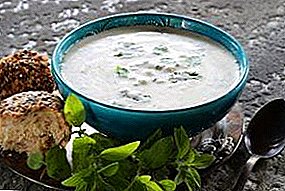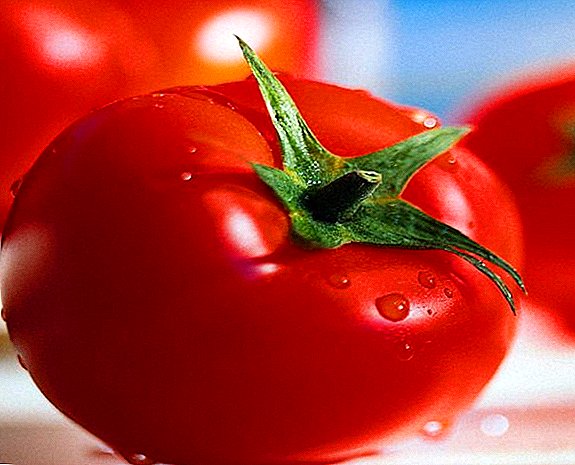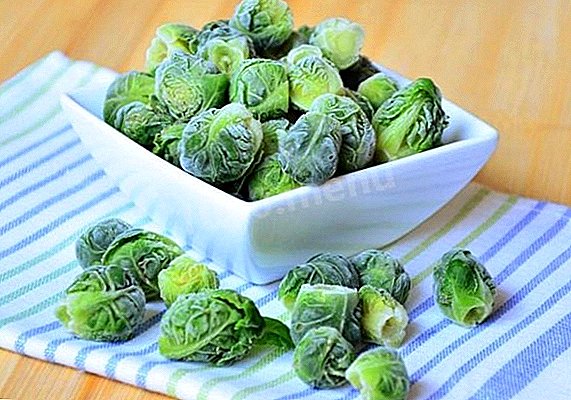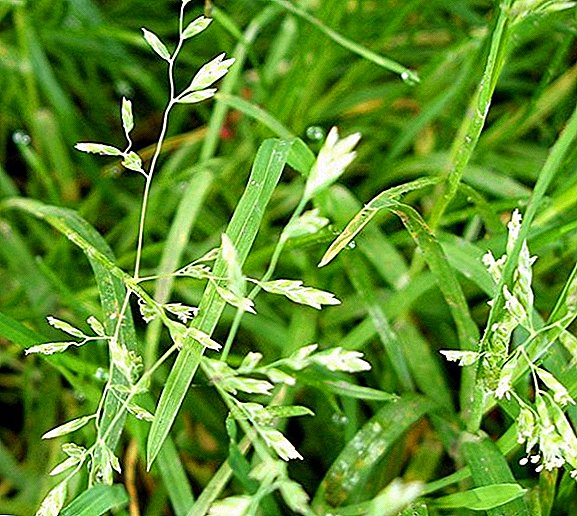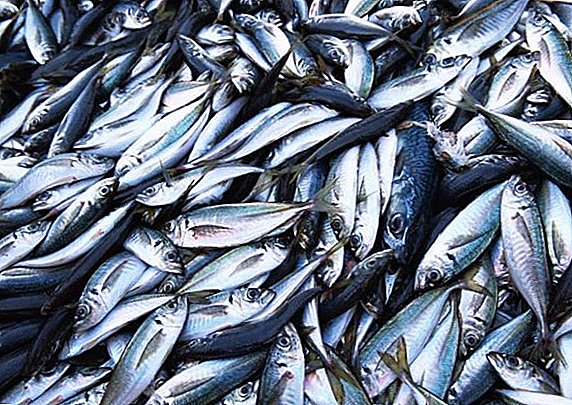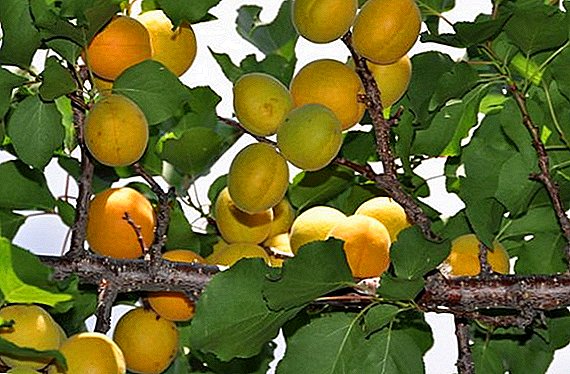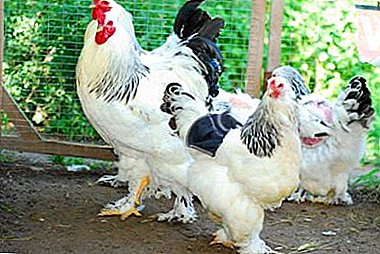
Breed Brahma in our country ranks second in the popularity of breeding. Individuals are large in size, fluffy feathers and easy to maintain. Among the additional benefits are attractive decorative effect, excellent meat taste and large eggs. Brahma Colombian (or light) refers to the most common subspecies. What you need to know about this breed?
Notes on the origin
Representatives of the breed appeared as a result of artificial breeding and prolonged selection. The ministers of temples in Asia, breeders from America and Europe worked on the exterior and performance indicators.
The breed was officially registered in the 80s of the 19th century.
The Colombian brama is the result of a cross between a Malay chicken and a Cochin quin. This allows you to refer them to meat breeds. Individuals were first bred as heavyweights, and then attention shifted to decorative characteristics. Today there are several resistant breeds.:
- meat;
- decorative;
- decorative and meat;
- dwarf.
Breed description with photo
Individuals are resistant to cold, damp and unpretentious conditions of detention. A special feature is an increase in egg production in winter, when the others reduce it. In the poultry houses Brahma, the Colombian world lives together with its neighbors, it becomes manual. Due to the large size, birds are not afraid of feathered predators and pets. Appearance is characterized by a number of standard features. Breed description:
- Plumage soft, fluff plentiful. The tail is lush, fan shape.
- Yellow skin color.
- Dense body constitution. Differences from kohinkhinov - a higher lift tail and thin bones.
- Developed wings and powerful legs.
- The eyes are deep set, the color is bright orange.
Next photo:



Color features
The breed of chickens, the Columbian brahma, is distinguished by a light shade of plumage and a dark color at the tip of tail feathers and wings. The colors of roosters and chickens are identical. A dark collar is visible around the neck.
The defective are chickens with a yellow coating on white feathers.
Differences from other species
Brahma is subdivided into species only by the color of plumage.. The characteristic differences of the rocks are in the brightness, intensity and combination of gray, white and black. Chicken can also be fawn (pale yellow) or partridge goose.
Characteristics and quantities
Previously, the live weight of Brahma breed roosters reached 7 kg. Today weight has decreased: chickens up to 4 kg, roosters up to 5 kg. Throughout the year, 120-140 eggs can be obtained from a layer (the weight of one egg is 50-60 g). The shell is durable, painted in dark beige color. After 3 years, egg production decreases, in 5 years, no more than 60 eggs can be expected from a layer.
Advantages and disadvantages of chickens
Among the advantages of the Colombian subtype - a calm disposition, the ability to tolerate other breeds, the possibility of domestication and trust in the host, as well as:
- frost resistance;
- the onset of egg laying in winter;
- advanced incubation instinct;
- undemanding to conditions of detention.
Among the disadvantages:
- large hen weight (can crush eggs);
- slow growth of young stock;
- weak plumage of paws (plus).
Maintenance and care
 Brahma Colombian, like all breeds of hen, requires constant clean litter. Otherwise, dirt and droppings will stick to their paws. Perches for birds should be done at a small height, since individuals hardly fly because of their heavy weight. Requirements for the coop are standard:
Brahma Colombian, like all breeds of hen, requires constant clean litter. Otherwise, dirt and droppings will stick to their paws. Perches for birds should be done at a small height, since individuals hardly fly because of their heavy weight. Requirements for the coop are standard:
- Good ventilation.
- Place the perches on 3 sides of the coop at a height of 50 cm from the floor. The width should not be less than 30 cm.
- Illumination for 12-15 hours (natural light and artificial lamps).
Feeding
A full-fledged diet will allow the young to develop normally, increase the live weight and maintain egg production. It is important not to overfeed the bird: individuals are prone to obesity, which affects their productivity. Daily ration should be calculated on the basis of feed units, the amount of vitamins and the age of the bird.
For chickens, be sure to add protein of feed origin to the cereal mixture. Among the healthy supplements for young stock are milk powder, boiled eggs, cottage cheese, fish meal. Chopped vegetables (carrots, cabbage) will be saturated with vitamins at any time of the year.
The optimal number of feedings - 1-3 times a day. Type of feeding is important to combine (dry, wet). In winter, grain feeds should be increased by 15%, since significant energy costs are used to heat the body.
Breeding
The chickens have developed hen instinct and breeding problems do not arise, but because of the large weight, a hen of a different breed is often taken to hatch eggs. The greater the age of the hen for breeding, the larger the egg and the strength of the chicken.
An average rooster can serve up to 15 females. It is important to keep young stock separately for 4-6 months. Brama Colombian - unpretentious and beautiful breed. The meat of these chickens is allowed for weight loss and various diseases.. When growing individuals, it is important to choose a balanced diet and follow the drinking regime.




